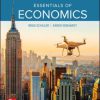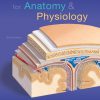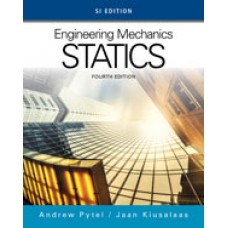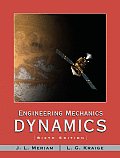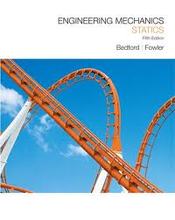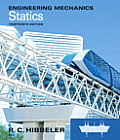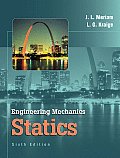Solutions Manual to accompany Engineering Mechanics: Statics 11st edition 9780132215008
$35.00 Original price was: $35.00.$26.50Current price is: $26.50.
Solutions Manual to accompany Engineering Mechanics: Statics 11st edition 9780132215008
This is completed downloadable of Solutions Manual to accompany Engineering Mechanics: Statics 11st edition 9780132215008
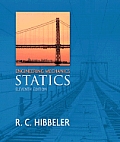
Product Details:
- ISBN-10 : 0132215004
- ISBN-13 : 978-0132215008
- Author: R. C. Hibbeler
Offers a concise yet thorough presentation of engineering mechanics theory and application. The material is reinforced with numerous examples to illustrate principles and imaginative, well-illustrated problems of varying degrees of difficulty. The book is committed to developing users’ problem-solving skills. Features “Photorealistc” figures (approximately 200) that have been rendered in often 3D photo quality detail to appeal to visual learners. Features a large variety of problem types from a broad range of engineering disciplines, stressing practical, realistic situations encountered in professional practice, varying levels of difficulty, and problems that involve solution by computer. A thorough presentation of engineering mechanics theory and applications includes some of these topics: Force Vectors; Equilibrium of a Particle; Force System Resultants; Equilibrium of a Rigid Body; Structural Analysis; Internal Forces; Friction; Center of Gravity and Centroid; Moments of Inertia; and Virtual Work. For professionals in mechanical engineering, civil engineering, aeronautical engineering, and engineering mechanics careers
Table of Content:
1 General Principles 3
Chapter Objectives 3
1.1 Mechanics 3
1.2 Fundamental Concepts 4
1.3 Units of Measurement 7
1.4 The International System of Units 9
1.5 Numerical Calculations 10
1.6 General Procedure for Analysis 12
2 Force Vectors 17
Chapter Objectives 17
2.1 Scalars and Vectors 17
2.2 Vector Operations 18
2.3 Vector Addition of Forces 20
2.4 Addition of a System of Coplanar Forces 32
2.5 Cartesian Vectors 43
2.6 Addition of Cartesian Vectors 46
2.7 Position Vectors 56
2.8 Force Vector Directed Along a Line 59
2.9 Dot Product 69
3 Equilibrium of a Particle 85
Chapter Objectives 85
3.1 Condition for the Equilibrium of a
Particle 85
3.2 The Free-Body Diagram 86
3.3 Coplanar Force Systems 89
3.4 Three-Dimensional Force Systems 103
4 Force System
Resultants 117
Chapter Objectives 117
4.1 Moment of a Force—Scalar
Formulation 117
4.2 Cross Product 121
4.3 Moment of a Force—Vector
Formulation 124
4.4 Principle of Moments 128
4.5 Moment of a Force about a
Specified Axis 139
4.6 Moment of a Couple 148
4.7 Simplification of a Force and Couple
System 160
4.8 Further Simplification of a Force and
Couple System 170
4.9 Reduction of a Simple Distributed
Loading 183
5 Equilibrium of a Rigid Body 199
Chapter Objectives 199
5.1 Conditions for Rigid-Body Equilibrium 199
5.2 Free-Body Diagrams 201
5.3 Equations of Equilibrium 214
5.4 Two- and Three-Force Members 224
5.5 Free-Body Diagrams 237
5.6 Equations of Equilibrium 242
5.7 Constraints and Statical Determinacy 243
6 Structural Analysis 263
Chapter Objectives 263
6.1 Simple Trusses 263
6.2 The Method of Joints 266
6.3 Zero-Force Members 272
6.4 The Method of Sections 280
6.5 Space Trusses 290
6.6 Frames and Machines 294
7Internal Forces 329
Chapter Objectives 329
7.1 Internal Forces Developed in Structural
Members 329
7.2 Shear and Moment Equations and
Diagrams 345
7.3 Relations between Distributed Load, Shear,
and Moment 354
7.4 Cables 365
8 Friction 387
Chapter Objectives 387
8.1 Characteristics of Dry Friction 387
8.2 Problems Involving Dry Friction 392
8.3 Wedges 412
8.4 Frictional Forces on Screws 414
8.5 Frictional Forces on Flat Belts 421
8.6 Frictional Forces on Collar Bearings, Pivot
Bearings, and Disks 429
8.7 Frictional Forces on Journal Bearings 432
8.8 Rolling Resistance 434
9 Center of Gravity andCentroid 447
Chapter Objectives 447
9.1 Center of Gravity, Center of Mass, and the
Centroid of a Body 447
9.2 Composite Bodies 470
9.3 Theorems of Pappus and Guldinus 484
9.4 Resultant of a General Distributed
Loading 493
9.5 Fluid Pressure 494
10 Moments of Inertia 511
Chapter Objectives 511
10.1 Definition of Moments of Inertia
for Areas 511
10.2 Parallel-Axis Theorem for an Area 512
10.3 Radius of Gyration of an Area 513
10.4 Moments of Inertia for
Composite Areas 522
10.5 Product of Inertia for an Area 530
10.6 Moments of Inertia for an Area about
Inclined Axes 534
10.7 Mohr’s Circle for Moments of Inertia 537
10.8 Mass Moment of Inertia 545
11 Virtual Work 563
Chapter Objectives 563
11.1 Definition of Work 563
11.2 Principle of Virtual Work 565
11.3 Principle of Virtual Work for a System of
Connected Rigid Bodies 567
11.4 Conservative Forces 579
11.5 Potential Energy 580
11.6 Potential-Energy Criterion for
Equilibrium 582
11.7 Stability of Equilibrium Configuration 583
Appendix
A. Mathematical Review and
Expressions 598
Fundamental Problems
Partial Solutions and
Answers 603
Answers to Selected
Problems 620
Index 650
People Also Search:
engineering mechanics statics
engineering mechanics statics 11st edition
engineering mechanics statics 11st edition download scribd
engineering mechanics statics 11st edition solution manual download pdf
You may also like…
Solution Manual
Solutions Manual to accompany Engineering Mechanics Dynamics 6th edition 9780471739319
Solution Manual
Solutions Manual to accompany Engineering Mechanics: Statics 13th Hibbler 0133009548
Solution Manual
Solutions Manual to accompany Engineering Mechanics – statics 6th edition 9780471739326


